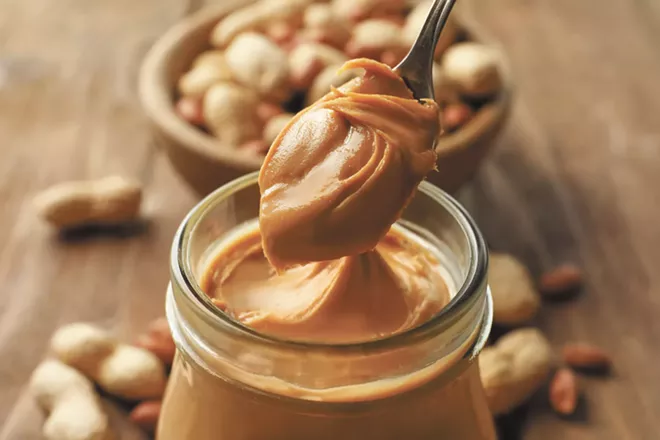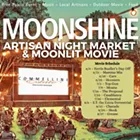Peanut butter may be a food in many households, but there are as many other "butters" as there are nuts and seeds. Nut (and seed) butters are made simply by grinding the nuts until smooth, creating a paste of nut solids suspended in their natural oils. Raw nuts can be used, but roasted nuts bring out a deeper flavor. Some nut or seed butters are traditional foods, dating back centuries, while others seem to be modern creations. If you choose to make nut butter at home, you can add additional ingredients — like cocoa powder, maple syrup or salt — to create your own unique butters.
Peanut Butter
Since peanuts are actually a legume, peanut butter doesn't technically fit the definition of a "nut butter," though it's likely the most widely loved of the category. At its simplest, peanut butter can be made by grinding roasted peanuts to a fine paste. However, most brands on grocery store shelves add additional ingredients like sugar (for flavor) and palm oil (to prevent separation). Peanuts are a great source of protein, fats, niacin, magnesium, vitamin E, biotin, and copper. Peanut butter, of course, can be enjoyed in many ways — from a classic PB and J sandwich to a topping on a frozen banana treat.
Almond Butter
Often used as a peanut butter substitute for those with peanut allergies, almond butter is a rich source of fiber, proteins, healthy fats and minerals. A rich source of calcium, almond butter contains less saturated fat than peanut butter and a better balance of healthy fats in its oil. However, almonds are naturally lower than peanuts in B vitamins, choline and folate. Almond butter can be enjoyed similarly to peanut butter. Like peanut butter, many almond butter brands on grocery store shelves contain palm oil to prevent oil separation, however both of these butters are commonly found freshly ground in natural grocery stores.
Hazelnut Butter
A bit harder to find, hazelnut butter could be your next secret weapon for a delicious meal or topping in a pinch. Hazelnut butter is a favorite for homemade recipes. The rich flavor of roasted hazelnuts creates a versatile base for potential add-ins. Most popularly, by adding in some cocoa powder and a sweetener of your choice (maple syrup, honey or agave would be suitable), you can create a wholesome at-home Nutella-like hazelnut chocolate spread. When eaten as a pure nut butter, hazelnut butter is naturally sugar-free, unlike both peanut and almond butter. Hazelnuts contain less protein than other nuts, but are rich in both vitamin E and heart-healthy oleic acids.
Sunflower Seed Butter
One of the most popular nut-free butters (so, nut-allergy friendly), sunflower butter has made quite an appearance over the past decade. It is most used as a nut butter replacement in similar places where you would use peanut or almond butter. Though it does have its own unique sunflower flavor, butter from these seeds is just as rich as its "nutty" competitors. Sunflower butter is higher in fiber and protein than many nut butters, and lower in fat. It is also rich in vitamin E and magnesium.
Tahini (Sesame Seed Butter)
When writing about nut and seed butters, tahini deserves a shout-out. References to tahini, the ground paste of toasted sesame seeds, date back to 13th century Persia — though it didn't find its way into American grocery stores until the 1940s. This paste can be used a bit differently than other nut and seed butters on this list. Tahini is often used as an ingredient in sauces and foods, rather than as a ready-to-eat spread. The paste has a strong sesame flavor that can be transformed into rich sauces and dressings, used as a key ingredient in hummus, or even used in baking (tahini and chocolate make a perfectly rich brownie). Much like milk, tahini curdles with the addition of a little acidity, which can transform the paste into many types of sauces (and makes for a delightful mayo substitute with an additional pinch of salt and some water). Tahini is incredibly high in many minerals, including copper and selenium, as well as vitamins B1 and B2.
Whatever way you enjoy your nut and seed butters, they all make for a tasty addition to a healthy diet. Since each nut or seed contains a different set of vitamins, minerals and fats, it's always a good idea to have a few options in your pantry for nutritional variety. Better yet, try out grinding your own nut butters in a food processor for the simplest, freshest butters — or create your own twist on the classics by adding in flavors of your own!
Stacey Aggarwal received a Ph.D. in pharmacology from the University of Washington. She writes about biology, health and nutrition while running a lavender farm in North Idaho.


















